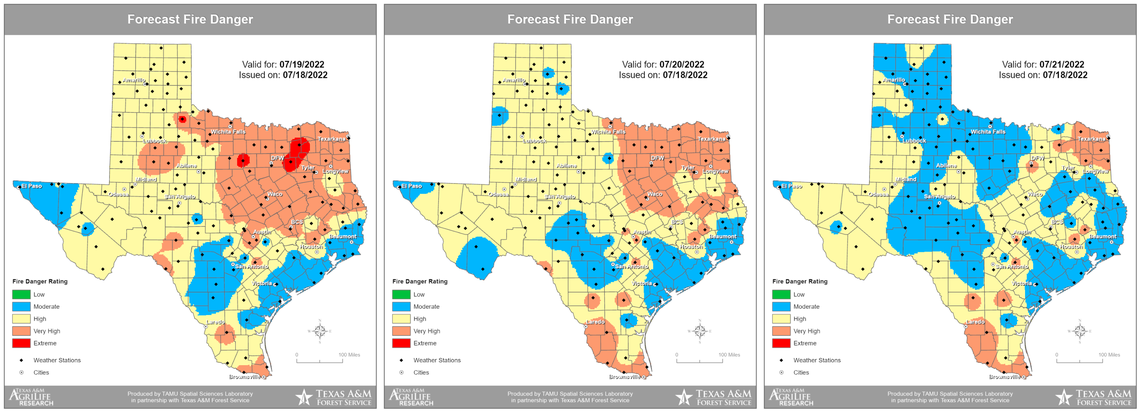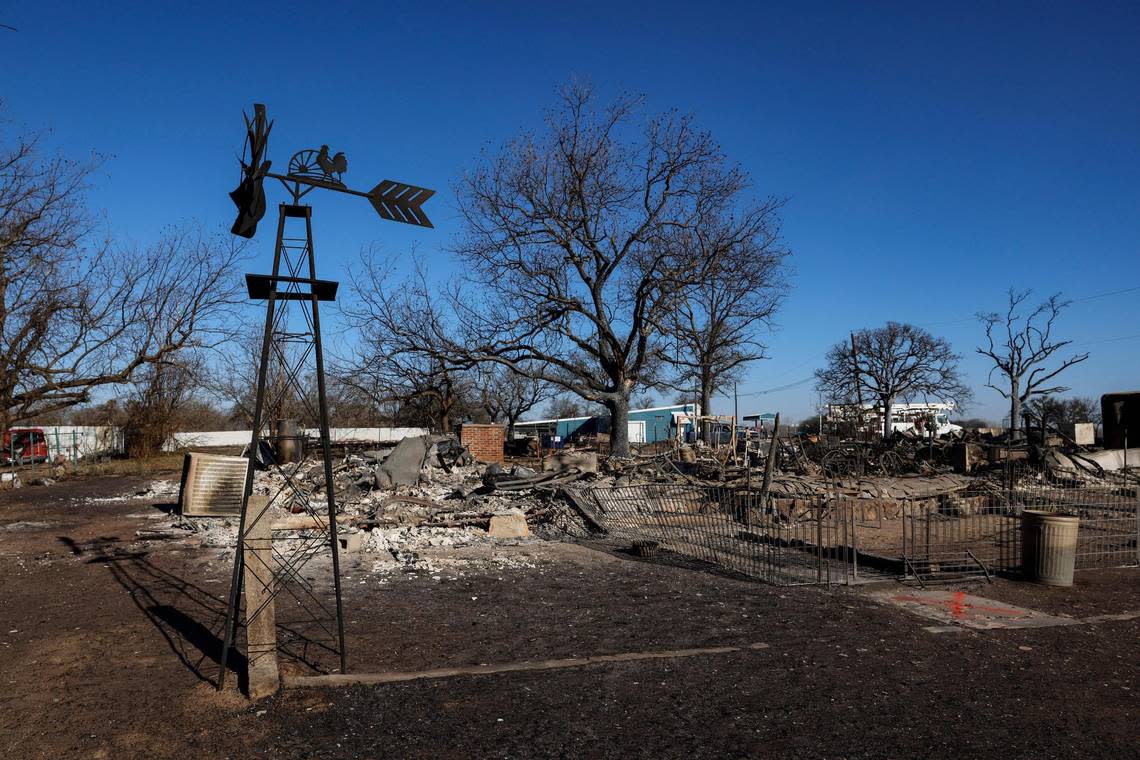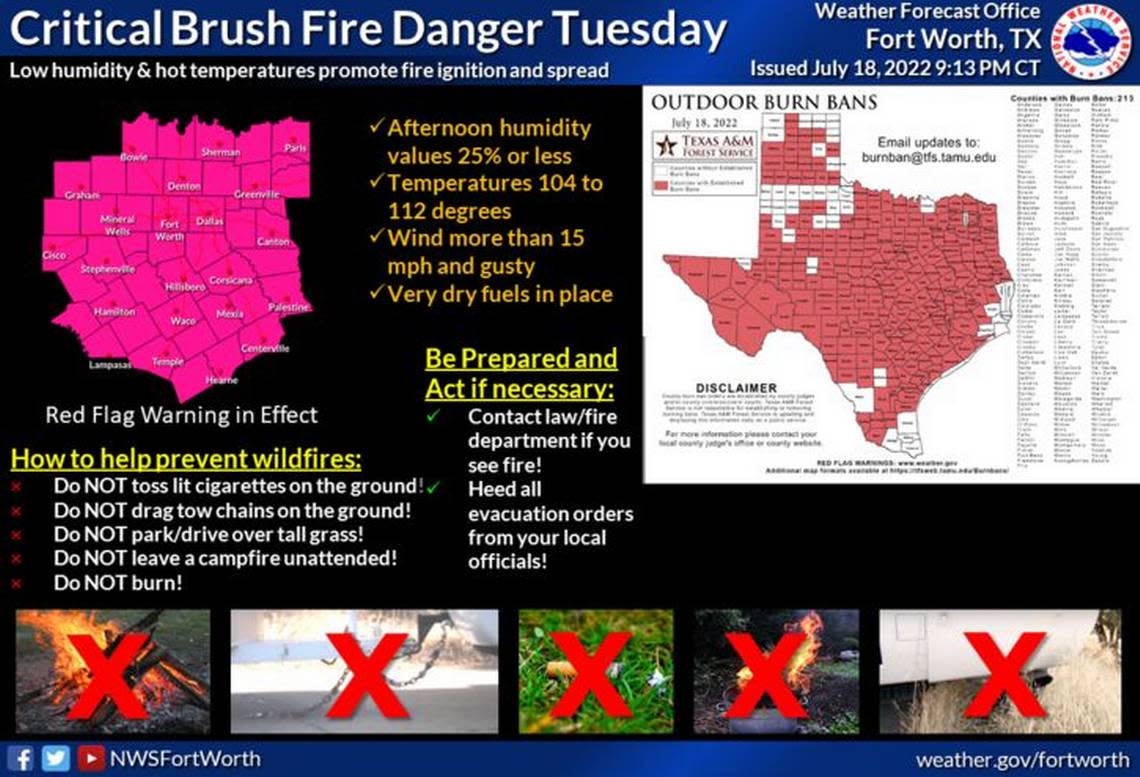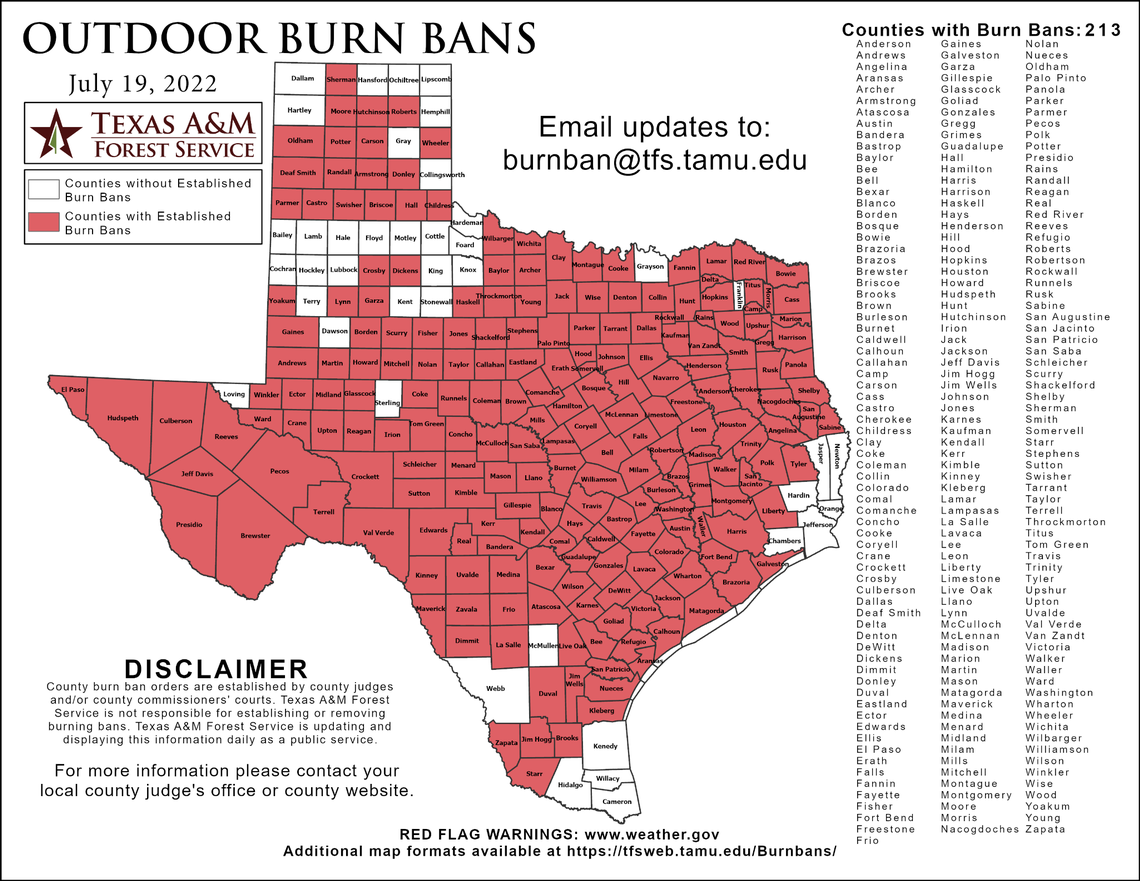North, Central Texas under Red Flag Warning through midnight. What does that mean?
A Red Flag, or fire weather, Warning is in effect through North and Central Texas from 10 a.m. Tuesday to midnight.
“Wildfires will have the potential to grow and spread rapidly. Any activities that could start a wildfire should be avoided. Burning of any kind is strongly discouraged and maybe unlawful in some counties,” says the National Weather Service about the 14 hour warning.

This year’s fire activity is trending above normal, according to the Texas A&M Forest Service. Since January, the agency has responded to 1,240 wildfires that burned 497,373 acres across the state. Above normal fire activity is expected to persist through the summer, as hot temperatures and dry conditions are forecast to continue for much of the state.

What is a Red Flag Warning?
A Red Flag Warning means that extreme fire weather conditions are either occurring now, or will shortly, according to the National Weather Service. The warning alerts fire managers on federal lands of highly unfavorable conditions for prescribed burns, which can lead to especially dangerous wildfire growth. When warnings are issued, officials curtail planned burns and are on the lookout for wildfires.

Red Flag Warnings are usually only issued during the spring and fall fire weather seasons, from February 15 to April 30 and from October 1 to December 15, says the National Weather Service. But a combination of strong winds, low humidity, hot temperatures and dry vegetation are contributing to increased risk of fire danger in the middle of summer. Currently, winds are blowing from the south at 10 to 15 mph with gusts near 25 mph, relative humidity is as low as 12%, and temperatures are as high as 103 to 112 degrees.

Texas drought conditions have also worsened recently. As of July 12, 94% of Texas was in drought conditions, affecting an estimated 22 million Texans, according to the U.S. Drought Monitor. About 52% of the state is seeing extreme or exceptional drought.
Current drought conditions
This map shows the current week's extent of drought conditions in the Dallas - Fort Worth area and across the United States from the U.S. Drought Monitor. Source: National Drought Mitigation Center, University of Nebraska-Lincoln.
Just six months ago, 67% of the state was in drought with 11% extreme or exceptional.
Under dry conditions and triple digit temperatures, Texas A&M Forest Service firefighters are responding to several large wildfires. On Monday, Texas A&M Forest Service responded to 18 fires for 6,594 acres. Overall, there are 53 ongoing wildfires in Texas encompassing 14,404 acres.
These were the uncontained large fires as of Tuesday morning:
Chalk Mountain, Somervell County – 4,000 acres and 10% contained
Nethery Road, Kimble County – 3,262 acres and 85% contained
Nelson Creek, Walker County – 1,500 acres and 35% contained
1148, Palo Pinto County – 500 acres and 10% contained
King Creek, Kaufman County – 452 acres and 75% contained
Honey Creek, Uvalde County – 350 acres and 25% contained
What are the conditions for issuing a Red Flag Warning?
To issue a Red Flag Warning, the National Weather Service needs the following:
Ten-hour fuels of 8% or less — This parameter describes how much water is held by small vegetation such as grass, leaves, and mulch that take only about ten hours to respond to changes in dry/wet conditions.
Relative humidity less than 25% for several hours — This depicts how much water is in the air, relative to the temperature of the air.
Winds 20 feet off the ground of at least 15 mph for several hours
What should you do under a Red Flag Warning?
Avoid all outside burning and welding Tuesday, the National Weather Service says.
As of July 19, 213 counties had outdoor burn bans, including Tarrant County. A burn ban can be established by a county judge or county commissioners court prohibiting or restricting outdoor burning for public safety.

To prevent wildfires under a Red Flag Warning, follow these steps from the National Weather Service:
If you are allowed to burn in your area, all burn barrels must be covered with a weighted metal cover, with holes no larger than 3/4 of an inch.
Do not toss lit cigarette butts outside, and do not throw cigarettes or matches out of a moving vehicle. They may ignite dry grass on the side of the road and become a wildfire.
Extinguish all outdoor fires properly. Drown fires with plenty of water and stir to make sure everything is cold to the touch. Dunk charcoal in water until cold. Do not throw live charcoal on the ground and leave it.
Never leave a fire unattended. Sparks or embers can blow into leaves or grass, ignite a fire, and quickly spread.
Do not park or drive over tall grass. Do not drag tow chains on the ground.
Texans are encouraged to make an evacuation plan with multiple routes, prepare an emergency kit with supplies, heed guidance from local officials and monitor local news. For current wildfire conditions, read the Texas Fire Potential Outlook.
If there is a wildfire, report it to the nearest fire department or law enforcement office. If your property sustained damage from a wildfire, report it through the Individual State of Texas Assessment Tool (iSTAT).
